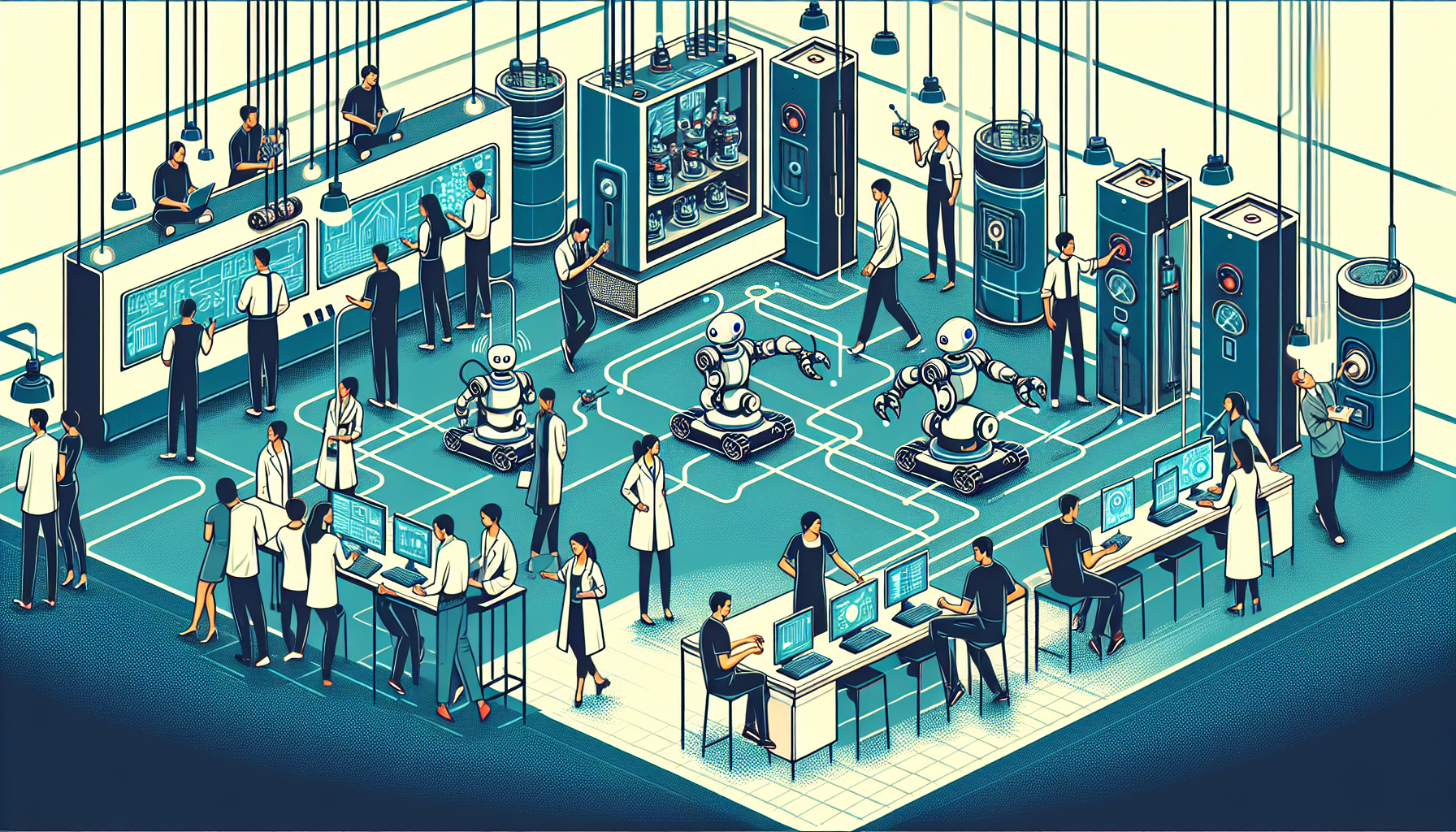At the forefront of technological innovation, a team of engineers from the Massachusetts Institute of Technology (MIT) has unveiled a major advancement in robotics. They have developed a pioneering training method designed to ensure the safe navigation of multirobot systems. This breakthrough, known as GCBF+ (Graph Control Barrier Function), is essential for managing large groups of drones and other autonomous systems in crowded and ever-changing environments.
The Challenge of Multiagent Systems
Multiagent systems, made up of intelligent and cooperative machines, face significant safety challenges. These systems, which include captivating drone shows, warehouse robots, and self-driving vehicles, demand precise coordination to avoid collisions and operate seamlessly. Traditional methods, like planning paths for each pair of agents, are not only complex but also fall short as they require considering every possible path each agent might take in relation to others.
The GCBF+ Method
The GCBF+ method transforms how safety is ensured in multiagent systems by offering a more efficient and adaptable approach. Instead of calculating specific paths, GCBF+ allows agents to monitor their safety zones, ensuring they remain within safe boundaries. This mirrors how humans move through crowds, prioritizing the immediate environment to prevent collisions.
Key Components of GCBF+
- Safety Barrier Function: GCBF+ employs a barrier function to define a safety zone for each agent. This boundary shifts in real-time as agents interact with one another, minimizing the need for complex calculations by considering only a subset of agents.
- Sensing Radius: By focusing on what each agent can directly observe, this method reduces the complexity involved in maintaining awareness of nearby agents, aiding in dynamic collision avoidance.
- Real-Time Adaptability: GCBF+ is reactive. It constantly assesses the environment based on agents’ positions and movements, allowing them to adapt quickly to any changes. This is vital in lively settings where unexpected events frequently occur.
Real-World Demonstrations
The effectiveness of GCBF+ was demonstrated through successful tests using a fleet of Crazyflies, small quadrotor drones. During these trials, the drones were able to swap positions in mid-air and land safely on moving Turtlebots without any collisions. These demonstrations underscore the method’s capability to manage complex operations and dynamic challenges, proving its practical worth in enhancing safety.
Broader Applications
The potential applications of the GCBF+ method are vast, extending beyond spectacular drone displays:
- Warehouse Automation: Robots can navigate cramped spaces safely and efficiently, optimizing warehouse operations.
- Search-and-Rescue Missions: Drones can navigate hazardous areas effectively, improving the success rate of rescue efforts.
- Self-Driving Cars: Autonomous vehicles can maneuver through busy city streets with heightened safety.
- Drone Delivery Systems: Drones can deliver packages safely, reducing the risk of accidents during transit.
Conclusion
The GCBF+ method, brought to life by MIT engineers, represents a remarkable leap in ensuring the safe operation of systems with multiple robots. By enabling these agents to dynamically outline their safety zones and adjust in real-time, this method not only boosts safety but also enhances the efficiency and adaptability of autonomous systems. As we move further into a future shaped by technology, GCBF+ is ready to establish new benchmarks for safety, influencing diverse fields such as entertainment, critical infrastructure, and public services.

Leave a Reply